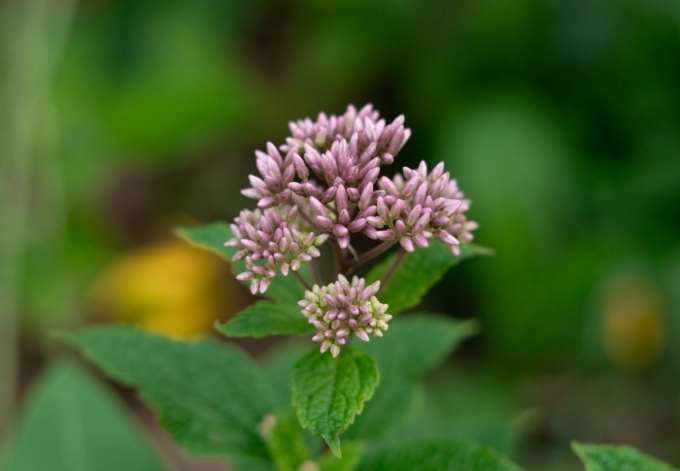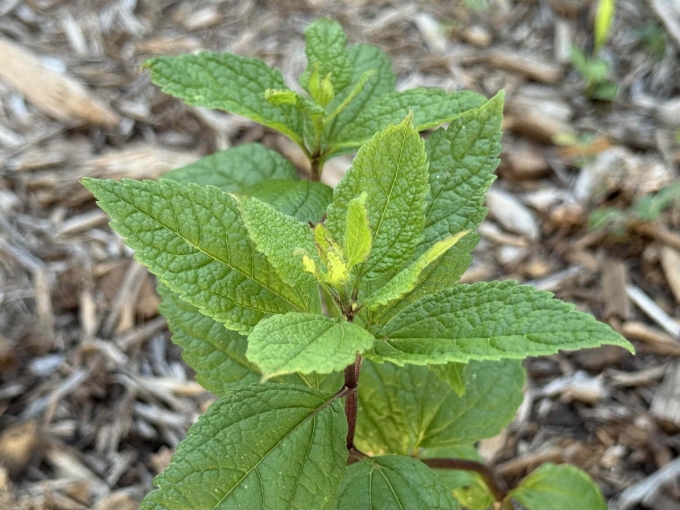Common Name: Little Joe Joe-Pye Weed
Family: Asteraceae
Plant Type: Herbaceous Perennial
Native Range: Eastern U.S.; Eupatorium dubium is native to wet meadows and coastal plains — ‘Little Joe’ is a compact garden cultivar
Hardiness Zones: 4–9
Height: 3.0 to 4.0 feet
Spread: 2.0 to 3.0 feet
Bloom Time: Late summer to fall (August–October in Nebraska)
Bloom Description: Large, domed clusters of mauve-pink flowers held on strong, upright stems
Sun Exposure: Full sun to part shade
Water Needs: Medium to high
Soil Preference: Moist, well-drained soils preferred; tolerates clay and average garden soils with irrigation
Management Level: Low to medium
Suggested Use: Pollinator gardens, rain gardens, borders, naturalized plantings
Attracts: Butterflies, bees, especially swallowtails and native long-tongued bees
Tolerates: Clay soils, deer, occasional flooding
Notable Features: Compact habit compared to other Joe-Pye Weeds, excellent pollinator plant, striking late-season color
Nebraska Growing Notes:
‘Little Joe’ brings the stature and pollinator appeal of native Joe-Pye Weed into a smaller package, perfect for Nebraska gardens where space may be limited. It thrives in full sun to light shade and prefers consistent soil moisture, especially in the hotter, drier parts of the state.
While it is more tolerant of dry spells than its larger relatives, regular watering during droughts improves bloom and vigor. Its upright, clump-forming habit and strong stems make it more manageable and less prone to flopping than taller species.
Its late-summer blooms provide an important nectar source for butterflies and bees when other flowers are fading.
Landscape Use:
Ideal for pollinator beds, rain gardens, native plantings, and the middle to back of perennial borders. Pairs beautifully with Solidago, Symphyotrichum, Rudbeckia, and ornamental grasses.
Caution:
Non-toxic and wildlife-friendly. Can self-seed lightly but is not aggressive. May get powdery mildew in humid, crowded conditions, ensure good air circulation.
Garden Locations:
Bed(s) 1, 4 (Planted in our gardens summer of 2025)


